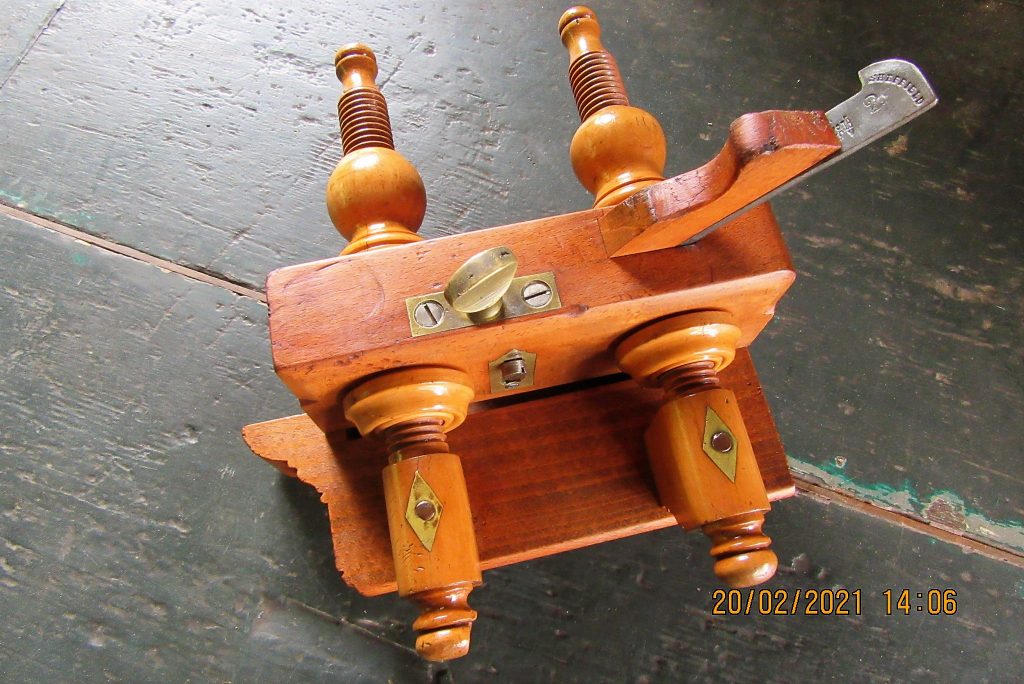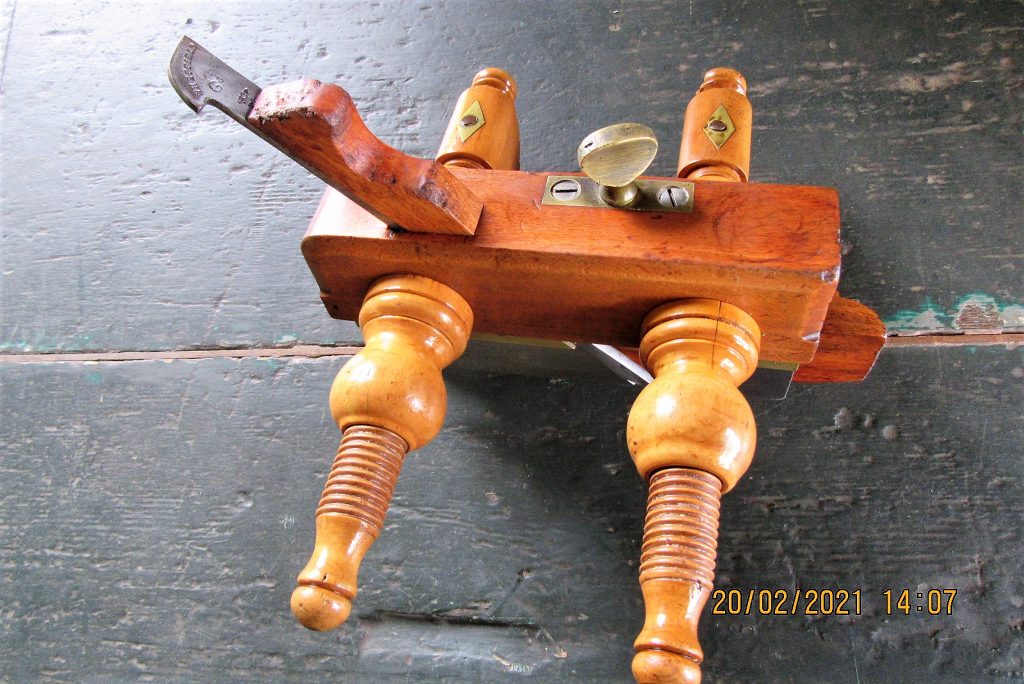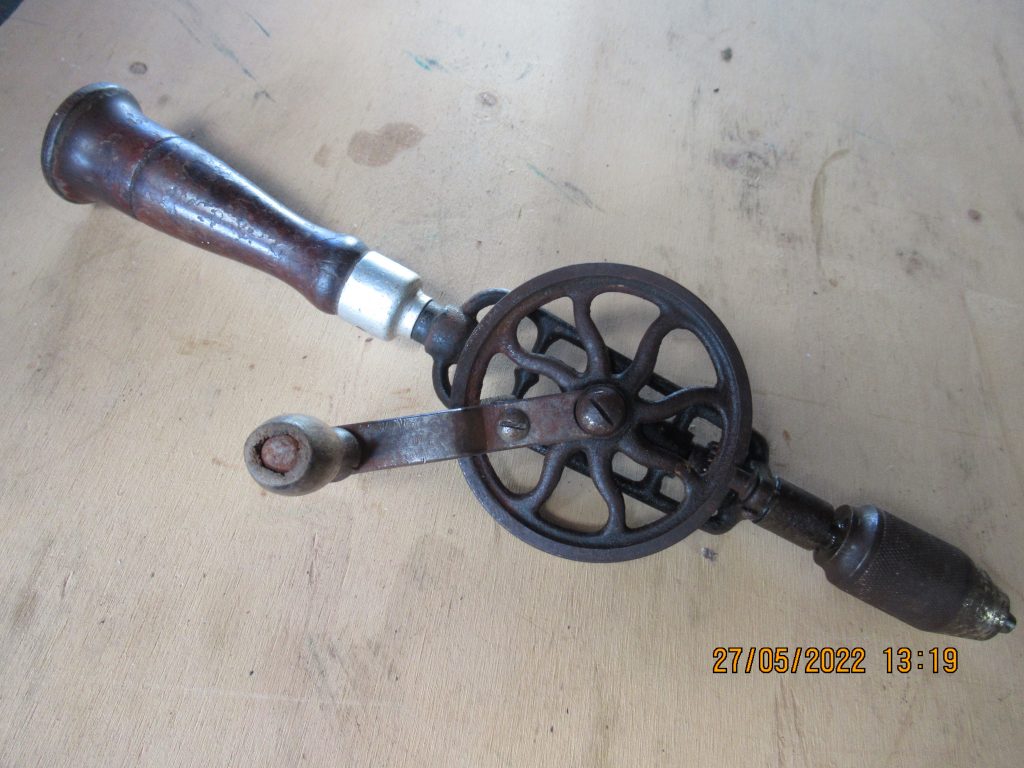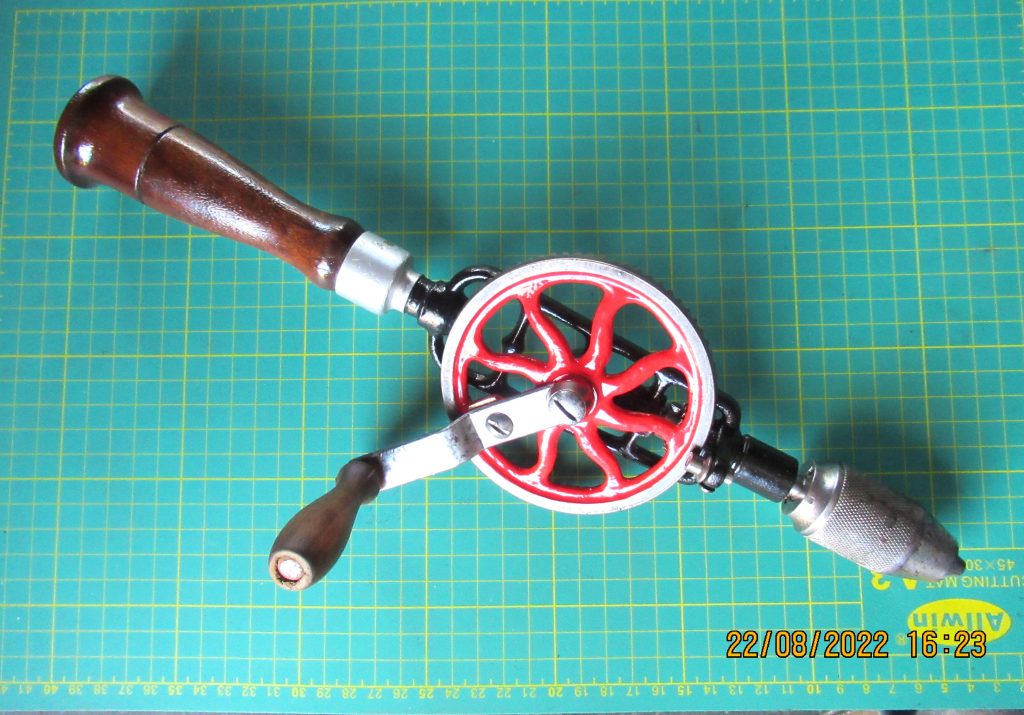In the pre-Industrial woodworker’s world a nice plough plane was the status symbol of a successful craftsman. They were made using every imaginable material and timber
After acquiring a Screw Stem Plough plane last year I gave it a preliminary clean and then put it aside with a view to using it on a few projects to see how it performed. The wedge securing the iron needed some adjustment and it was evident that the wooden nuts would need some lubrication on the threads of the stems or staves.

I have now dismantled it again and worked over the plane body and the fence, both made of European Beech, to clean them without removing too much of the “patina” of old dings and bruises.
All wooden planes are adjusted by tapping with a hammer to advance the iron and so acquire bruises on the nose of the body. If these are deep they cannot be removed completely.
The screw stems and the securing nuts are made of boxwood, probably Turkish box. This timber is very hard with a fine, straight grain. It is an ideal timber in which to cut threads. The nuts on this plane had become stuck on the stems at some stage in the past and had been forced with metal plumbers grips, leaving tell tale marks. I have cleaned out the resulting cuts to remove as much as possible of the evidence of this.
I investigated the finish on the stems and found that it came off when rubbed with Methylated Spirits. This indicated that the finish had been Shellac (French Polish). The box wood was cleaned off with fine steel wool. With hindsight I should have lightened the timber with Bar Keepers Friend. This contains citric acid and will bleach timber. I applied a couple of coats of Shellac and will now see how this wears. The Shellac has made the box wood appear darker. If the finish fails the Shellac is reasonable easy to remove and I can revert to BLO.
The wooden threads have been lubricated with paste wax and again I will have to wait and see whether this keeps them moving easily.
Although the plane looks a little clunky it is capable of cutting clean grooves as narrow as ⅛” for sliding box lids and the like. It has eight irons running from ⅛” to ⅝”. Wider grooves can be cut by taking two parallel passes with the appropriate irons.

Millers Falls Drill
MILLERS FALLS HAND DRILL No.2
The Millers Falls Company, a hand tool manufacturer, was originally located in Western Massachusetts, USA. A Massachusetts-based entity until 1982, the firm was incorporated as the Millers Falls Manufacturing Company in 1868, was renamed the Millers Falls Company in 1872, and became a division of Ingersoll-Rand in 1962. After further changes of ownership, the name and trademark were acquired by the Hangzhou Great Star Industrial Co., Ltd, of Hangzhou, China in 2009.
Millers Falls manufactured a wide variety of hand and power tools. The No.2 hand drill (often described as a “egg beater”) appears to have been introduced in 1878. Having
undergone several minor changes in numbering and still part of the line as late as 1981, the century-long production history of the No. 2 easily rates it as one of the best-selling hand drills of all time. The popularity of the Millers Falls Company’s drills and bit braces was, perhaps, the single greatest reason for the firm’s success until the 1920’s, when profits from the sale of power tools and hand planes provided a much-expanded base of financial support.
The No. 2 underwent a number of changes over its long production history. This example can be identified as having been produced after 1929 when the reinforced spindle housing was introduced and after 1931 when the trademark stamped on the crank was changed from the Millers Falls location to Greenfield. It was made before 1938 when the adjustable friction roller was replaced by an idler pinion. It can therefore be dated between 1931 and 1938.
The main features of this drill are:
* Malleable iron frame;
* Offset crank;
* Ball thrust bearing on spindle;
* Ryther’s three jaw chuck which holds drill bits up to ⅜ inch diameter;
* Cocobolo head (main handle), crank handle unspecified hard wood;
* Detachable mushroom shaped hardwood side handle;
* Adjustable friction roller;
* Frame black japanned, drive gear painted red, bright parts nickel plated;
* Hollow handle for drill bit storage. The cap is secured with an easily damaged wooden thread which is intact on this example.
This drill has lost all the red paint on the drive gear and much of the black japanning on the frame, the side handle is missing and the spindle is seized solid. The head handle and the crank handle require stripping and refinishing. The nickel plating on the bright parts is damaged and rust showing through in places. The chuck jaws open and close and I assume the springs are intact but it needs to be disassembled, cleaned internally and lightly greased.
The drill requires a major restoration and overhaul to bring it back into use.
There are none currently advertised on eBay.au or on eBay.uk. There are several on eBay from the USA at a wide range of “buy now” prices ranging from USD 40.00 – 350.00 depending on condition. Our example would be at or below the lowest figure given its condition.
Sources:
https://oldtoolheaven.com/millers-falls/hand_drills/drill2.htm
https://newbritainboy.wordpress.com/2013/01/15/millers-falls-eggbeater-chuck-re-build/
Restoration
The drill was disassembled but the seized spindle was rusted in place. Soaking in WD40 and penetrating oil were to no avail. Jim’s assistance was sought and he heated it with a torch and freed it. A kind friend of his cleaned up the thread on the spindle onto which the chuck is screwed.
The frame was cleaned back to bare metal as none of the original black stove enamelling had survived. It was painted with black Hammerite metal paint. The drive wheel was also cleaned to bare metal and painted with red Hammerite. The top handle was cleaned back to bare wood and six coats of shellac applied. It is intended that this will be given two coats of polyurethane varnish to provide a hard-wearing finish. The crank arm was originally nickel plated but corrosion has broken through the plating. It will be painted black in due course.
The wooden crank handle has some checks and these will be glued when a method of clamping the cracks together has been devised. It will then be coated with shellac and varnish.
The chuck was also nickel plated and the knurling has been damaged in the past, probably in an attempt to free the seized spindle. The exterior has merely been cleaned. The interior of the chuck was dirty but the springs were intact. All have been cleaned and lightly greased.
The chuck now operates smoothly and grips well.
Jim was concerned that the spindle may have distorted as a result of the application of heat.
When the chuck is held in a vice the frame spins almost true and in any event the very slight oscillation is not sufficient to affect accurate drilling.
The top of the spindle fits into a recess in the frame. Inside the recess are two round steel plates between which are five tiny ball bearings. The recess was cleaned and the balls and the plates were soaked in de-greasing fluid and then lightly greased on reassembly.
The friction roller operates well. The roller ensures that the main gear and single pinion gear remain in correct mesh along their corresponding pitch lines, thereby minimizing backlash and ensuring accurate, smooth rotation under load.
The drill now operates smoothly and freely. Subject to the application of the occasional drop of oil through the oiling holes it should be good for another drilling precision holes for
another generation.
It is claimed that the Millers Falls Company developed the best single-speed, non-ratcheting, eggbeater drill there ever was …… until Marketing vanquished Engineering. It was the Rolls Royce of hand drills. Martin Hicks
Before

and after

